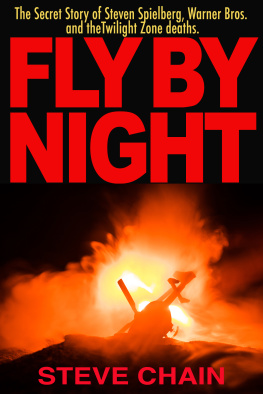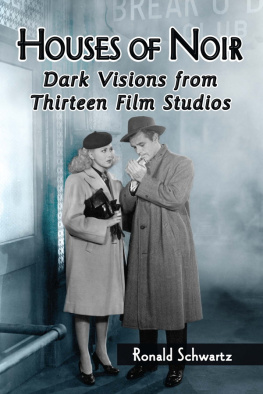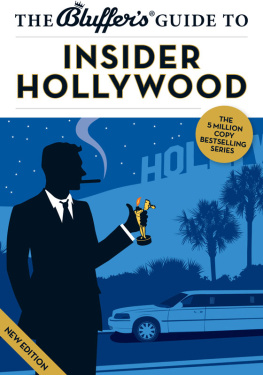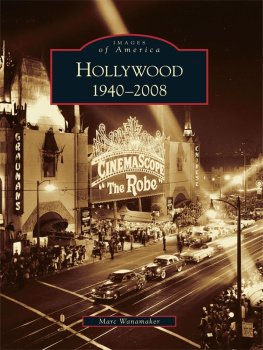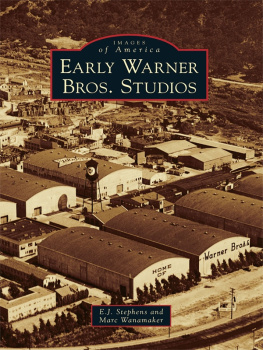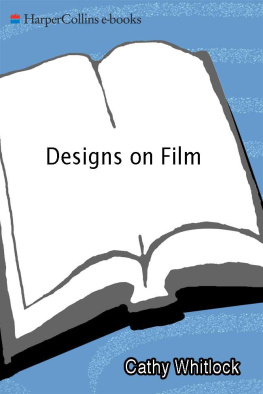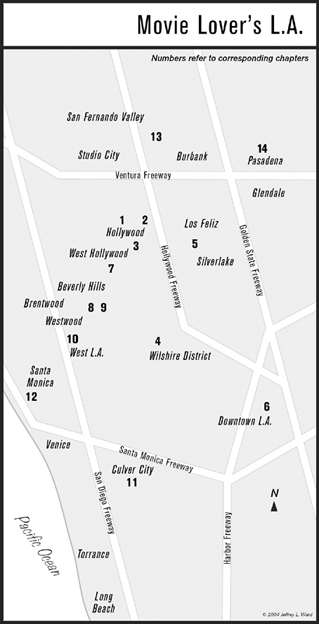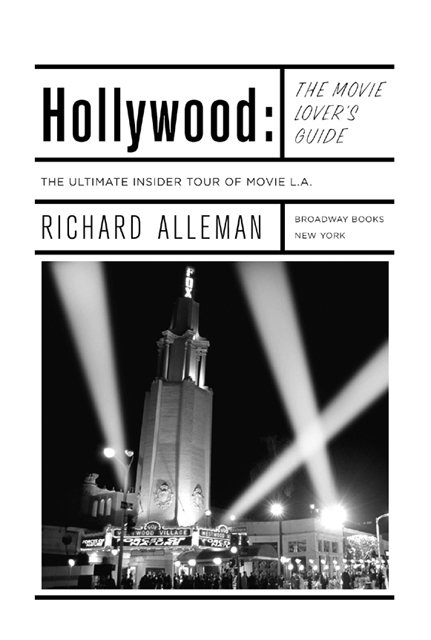
Copyright 1985, 2005 by Richard Alleman
All rights reserved.
Published in the United States by Broadway Paperbacks, an imprint of the Crown Publishing Group, a division of Random House, Inc., New York.
www.crownpublishing.com
Broadway Paperbacks and its logo, a letter B bisected on the diagonal, are trademarks of Random House, Inc.
Originally published in slightly different form in the United States as The Movie Lovers Guide to Hollywood by Harper & Row, New York, in 1985. This revised edition was originally published in slightly different form by Broadway Paperbacks, a division of Random House, Inc., New York, in 2005.
Library of Congress Cataloging-in-Publication Data:
Alleman, Richard.
Hollywood : the movie lovers guide : the ultimate insider tour of movie
L.A. / Richard Alleman.1st Broadway Books trade pbk. ed.
p. cm.
Rev. ed. of: The movie lovers guide to Hollywood.
Includes index.
(alk. paper)
1. Motion picture locationsCaliforniaLos AngelesGuidebooks.
2. Motion picture industryCaliforniaLos AngelesGuidebooks.
3. Los Angeles (Calif.)Guidebooks. 4. Los Angeles (Calif.)
Description and travel. I. Alleman, Richard. Movie lovers guide to
Hollywood. II. Title.
PN1995.67.C2A44 2004
791.430250979494dc22
2004054476
eISBN: 978-0-8041-3777-5
Book design by Caroline Cunningham
Maps by Jeffrey L. Ward
v3.1
To the memory of my mother, Kaye Alleman,
who first took me to the movies
and my father, R. B. Alleman,
who first took me to California
Contents
Acknowledgments
Again, there are many people to thank. First of all, all the people who helped with the original edition, including my then agent Paula Diamond, legendary editor Larry Ashmead, and the late Roy Barnitt, Eleanore Phillips, Ronald Haver, Billy Wilder. And, for their help with the new edition, Im especially grateful to Charles Conrad at Random House for letting me return to the scene of the crime, and to Alison Presley for her hard work in making everything come together. In addition, I couldnt have written this without the help and superior research of Bruce Kingsley, David Dedeaux, and Bill Brown. Thanks also to David Garth, Robert Bierley, Mark Decker, Bryan Harper, and Ed Klein for their help on site (and in the car) in Los Angeles, and to so many others, including Anna Martinez at the Hollywood Chamber of Commerce; Honorary Mayor of Hollywood Johnny Grant; Marc Wanamaker at Bison Archives; Kristine Krueger and Leslie D. Unger at the Academy of Motion Picture Arts and Sciences; Michelle Blaya for the Beverly Hills Convention and Visitors Bureau; Wendy Schnee at the Beverly Hills Hotel; Dinah Hoven at the Huntington Library and Museum; Alec Layattienakoff at the Argyle Hotel; Holly Fazio at Sony Pictures; Joanna Erdos at John Marshall High; Catherine Lucas at Warner Bros.; Lori Falco at Occidental College; Nadia Balaz at the L.A. County Arboretum; Jennifer Westfell at Pacific Theatres; Tammy Lyn Phillips for the Fairmont Miramar; Lisa Melou at Mount St. Marys College; Mike Malone at the National Park Service; Marlene Armas-Zermeno at the Millennium Biltmore; Imee Gacad for the City of West Hollywood; Gary Gadson at tla Video; Jim Heimann; Candice Carstensen; Christina Hart; Jane E. Lasky; Mike Salazar; Jennifer Green; Jack Sayer; Dick Lovell; Planeria Price; Russell Leland; Lucy McIntyre; Trey Walkey; Skye Lacerte; Lydia Pogorzelski; Donna Reyes; Jan Davis; Pat ODonoghue; Lynette Falk; Robert Gitt; Kelly Granlon; J. Duncan Trussell; Marsha Feldman; Julie Lugo Cerra; Sami Chow; Andy Ulloa; Laurel Lambert; Dana Bromley; Barrie Perks; Debbie Lee; Adriana Daunt; Stephanie Senter; Robert Keser; Rabecca Faez; Lorena Parker; Lynda Bybee; Peter Deming, Ian Schrager Hotels; the Queen Mary; and Mikael T. Zielinski.
Introduction
One of the most delightful periods of my life was the year I spent in Los Angeles in the mid-1980s researching the original Movie Lovers Guide to Hollywood. I had always been attracted to Los Angeles for all the usual reasonsthe weather, the beach, the palm trees, and naturally the movies. And with my first book contract ever, I now had this wonderful opportunity to explore the city in depth, tracking down the vestiges of L.A.s legendary film past. Indeed, at times I felt like a Raymond Chandler detective, following leads about long-lost studios, splendid movie palaces, secret cemeteries, and little-known locations for classic films like Double Indemnity, Sunset Boulevard, and A Star Is Born. Meanwhile, the icing on the cake was that during my wanderings I wound up meeting a number of Hollywood legendsfrom director Billy Wilder to actress-photographer Jean Howard to Mary Pickfords actor husband Charles Buddy Rogersall of whom were wonderfully supportive of my project and generous with their time and stories.
The mid-1980s was a critical time for Hollywoodand by Hollywood I mean any area of L.A. with a connection to the movie industry (in other words virtually all of Los Angeles). For it was a period when many historical landmarks were being torn down in the name of progress, which usually meant yet another strip shopping center. At the same time, however, preservationists were finally getting organized and becoming serious about fighting developers and sometimes even city hall to save L.A.s endangered past. In addition to the buildings that were saved back then, perhaps the greatest legacy of this period was the fact that it raised the consciousness of many Angelenos to the wisdom of preserving the citys rich cinematic legacy. And Id like to think that The Movie Lovers Guide played a small role in that process.
For personal and professional reasons, I spent most of the last decade far from L.A. In fact, when I was approached to revise the Movie Lovers Guide to Hollywood in 2003, it had been almost seven years since I had spent any time at all in the city I had come to know so well and love so much. Seven years is a long timeso I was concerned anew about just how much of the movie lovers Los Angeles remained. Happily, I discovered that not only were most of the sites from my original book still standing, but many had been rehabilitated, often as museums or, in the case of movie palaces, as clubs, churches, or legitimate theaters.
In addition to the thrill of revisiting old sites, returning to this project after so long meant I had almost two decades of film historynot to mention film locationsto catch up with and uncover. So once again I switched into Philip Marlowe mode, slightly older but no less enthusiastic than I had been in the 1980s. In the process, I rekindled old friendships and fell in love with L.A. all over again. Talk about happy Hollywood endings.

For readers not familiar with the original Movie Lovers Guide to Hollywood, this book is meant not just for armchair travelers, but to be as actively used as any travel guide. To help orient sightseers, a numbered site map precedes each chapter. Not necessarily drawn to scale, these maps are included to show landmarks and sites as conveniently as possible. It is therefore recommended that serious sightseers consult an additional, more detailed mapespecially when setting out for some of the more distant areas covered in the guide. Let me also stress that many of these places are private property. Needless to say, the privacy of the owners and tenants should always be respected. A final note: Whereas youll need a car to best see many of the places in this book, thanks to L.A.s cool new subway system, its now possible to do a movie lovers tourespecially to the areas covered in the first six chaptersby Metro! Raymond Chandler would have loved it.


